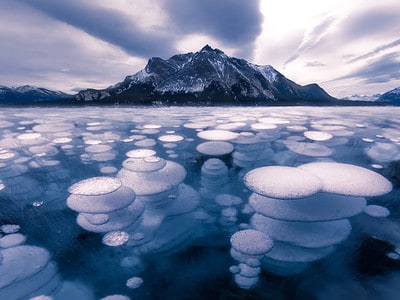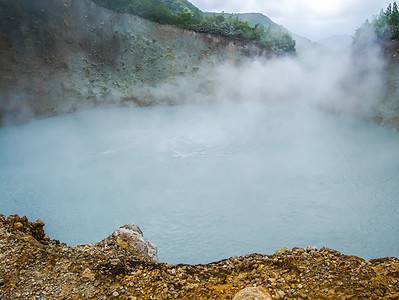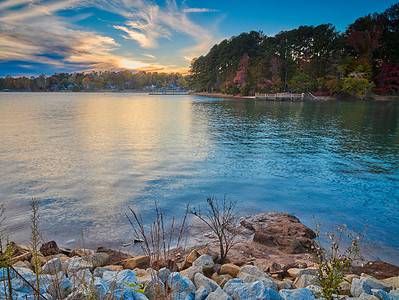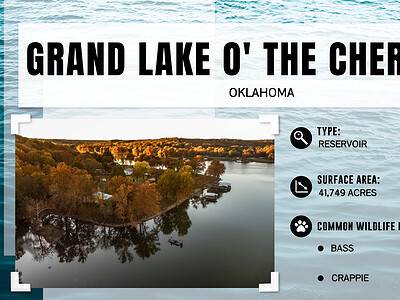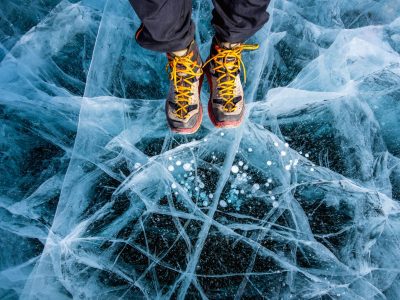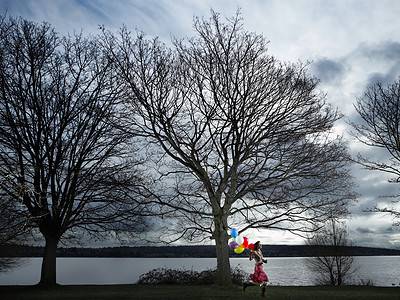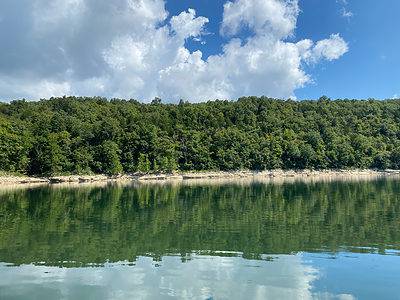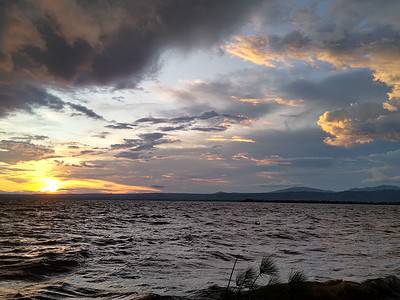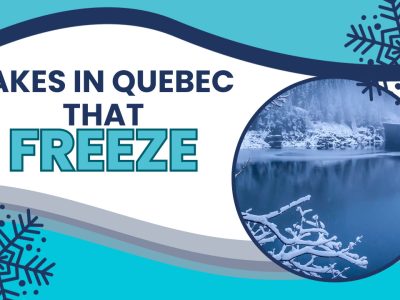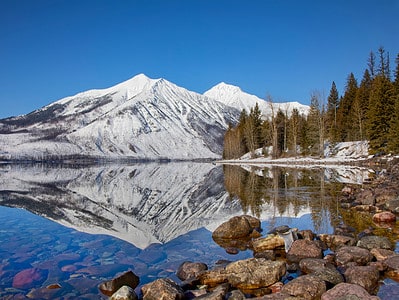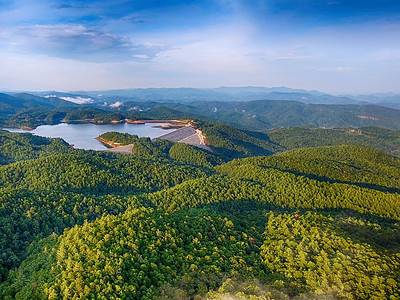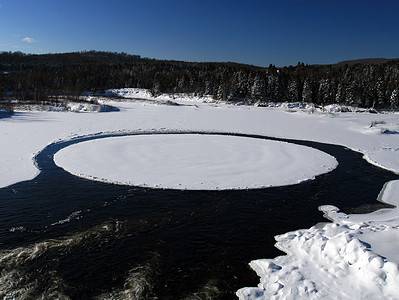Most Recent Posts on Lakes
Lakes are usually referred to as bodies of water surrounded by land. However, it has been extremely challenging for hydrologists to provide a clear definition of a lake. That’s due to the difficulty of establishing clear distinctions between lakes and other bodies of water, such as ponds and rivers. This book on hydrology states that a lake can be called so only if it fits into these five characteristics:
- It partially or totally fills one or several basins connected by straits (a landform connecting two large water areas);
- It has essentially the same water level in all parts (except for relatively short-lived variations caused by wind, varying ice cover, large inflows, etc.);
- It does not have a regular intrusion of seawater.
- A considerable portion of the sediment suspended in the water is captured by the basins.
- The area measured at the mean water level (the average surface level of a body of water) exceeds an arbitrarily chosen threshold (for instance, one hectare).
Lakes can be very different in terms of their depth. Lake Baikal in Russia is the deepest lake in the world, with a depth of more than one mile. Other lakes can be so shallow that one could wade in them.
Most of the planet’s lakes are located in the Northern Hemisphere at higher latitudes – in mountainous areas, regions with ongoing glaciation, or rift zones. Canada, for example, has an estimated number of 2 million lakes. It is almost impossible to state how many lakes there are in the world, just like we don’t know how many islands the Earth has. First, it is difficult to tell the difference between lakes and other bodies of water. Second, some lakes are so small that they cannot be seen on maps or satellite imagery.
However, certain studies estimate that the Earth has 304 million ponds and lakes. The most exciting fact is that, even though there are many lakes on the planet, most of them are incredibly small. As a result, almost all the lake water on Earth is in around 100 large lakes.
What causes lakes to form?
Lakes can form from melted glaciers or after volcanic eruptions. Even the wind can create lakes. Hutchinson’s 1957 classification of lakes presents 11 types of lakes that are subsequently divided into 76 subtypes. They are classified by the way they were formed.
- Tectonic lakes
- Volcanic lakes
- Glacial lakes
- Fluvial lakes
- Solution lakes
- Landslide lakes
- Aeolian lakes
- Shoreline lakes
- Organic lakes
- Anthropogenic lakes
- Meteorite (extraterrestrial impact) lakes
We will discuss some of the most common ways lakes are formed.
Glacial lakes
Most lakes appeared around 18,000 years ago and were formed by glaciers covering large areas of land. As these glaciers moved, they scrubbed the land and filled the formed depressions with melted water. Lakes formed this way are primarily found in the Northern Hemisphere.
Tectonic lakes
Other lake basins appeared as a consequence of the movement of the Earth’s plates that made the crust of the Earth break, eventually creating lake basins. In time, these were filled with rainwater or streams.
Volcanic lakes
Volcanoes can also create lakes. It’s difficult to see the connection at first, but it’s pretty easy. When the volcano erupts, the volcano’s top can collapse, leaving behind some kind of depression. Then, just like with lakes created through plate tectonics, the basin fills with rainwater. One of the deepest lakes in the world, Crater Lake, appeared after a volcanic eruption.
Fluvial lakes
Other lakes can appear when river waters get past a meander and leave a body of water behind. They can also form where the main river is blocked by sediment from a tributary.
Landslide lakes
Mudflows, screes, or rockslides can also form lakes by creating a blockage in a river valley. However, these lakes usually disappear after a few months.
Aeolian Lakes
The wind can also create lakes, mainly by wind-blown sand forming lake basins. An example of an aeolian lake is Moses Lake in Washington, United States.
Anthropogenic lakes
Lakes can also be made by humans by damming rivers or digging basins.
Other ways to classify lakes:
Lakes can also be classified by thermal stratification (holomictic and meromictic), by seasonal variation in water level and volume (ephemeral lake, dry lake, perennial lake, playa lake, and shallow lake), by water chemistry (acid lake, salt lake, alkali sink, salt pan, saline pan), and by their liquid (lava lake, hydrocarbon lakes).
Lake vs. pond: what’s the difference?
There are three main differences between a lake and a pond:
- Depth – a lake is generally deeper than a pond.
- Shape – a pond has rounded edges, while a lake has more of an oval shape.
- Water-type – most lakes are freshwater, containing amounts of saltwater; ponds, on the other hand, are only freshwater.
Lake vs. river: what’s the difference?
Here are five main differences between lakes and rivers:
- Type of water – lakes are filled with still water, while rivers flow in one direction.
- Formation – lakes can be artificial, while all rivers are natural.
- Shape – lakes are shaped similarly to a pond, while rivers are narrow and long, having the form of a snake.
- Connection with other bodies of water – lakes are not connected to seas or oceans. All rivers, on the other hand, flow either into the seas or oceans.
- Landmass boundaries – lakes are surrounded by land on all sides, while rivers are open bodies of water.
Lake vs. sea: what’s the difference?
There are 5 essential differences between lakes and seas:
- Size – lakes are considerably smaller and more shallow than seas, while the latter are considerably larger and deeper than lakes.
- Water-type – while lakes can have freshwater, saltwater, and brackish, seas contain only saltwater.
- Formation – lakes can be natural and man-made, while seas are natural bodies of water.
- Boundaries – lakes are completely surrounded by land, and streams, rivers, and rain supply their water; seas are connected to oceans and are only partially surrounded by land.
- Current – the current of the lakes is driven by wind. That of a sea is a natural ocean current driven by salinity, temperature, and winds.
5 Famous Lakes Across the World
1. Lake Baikal
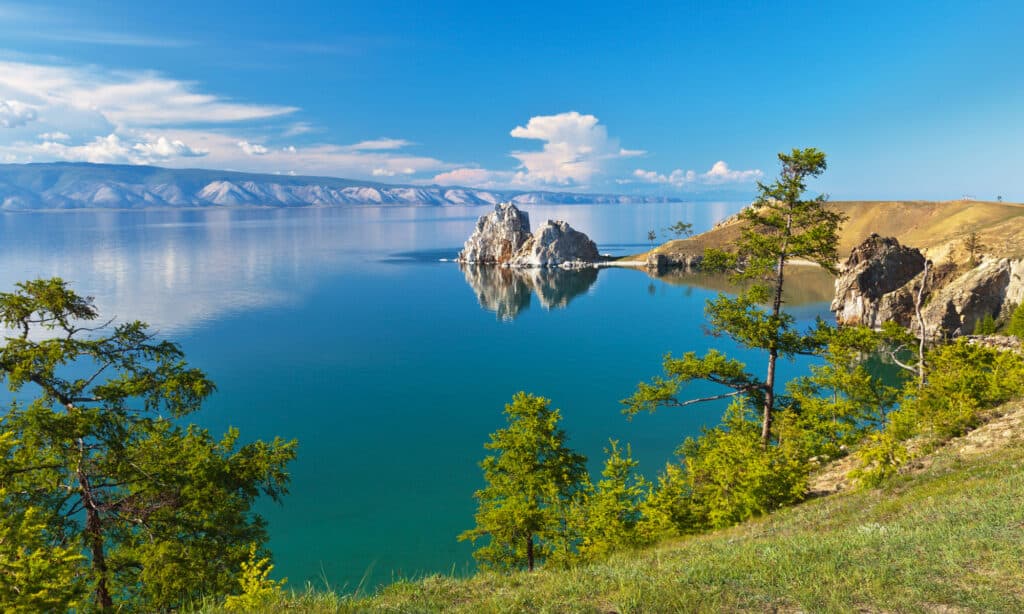
Lake Baikal is the largest freshwater lake by water volume.
©Katvic/Shutterstock.com
This lake is the deepest and oldest worldwide. It is located in Russia. Scientists estimate that it appeared around 25 million years ago. Moreover, it’s the largest freshwater lake by water volume. People come here because the water is clean and there is visibility down to 30-40 meters.
Suppose you’re an aquatic enthusiast but afraid of deep diving. In that case, visiting Lake Baikal will make for some fantastic memories. You’ll be able to see its ecosystem from the surface!
2. Lake Victoria
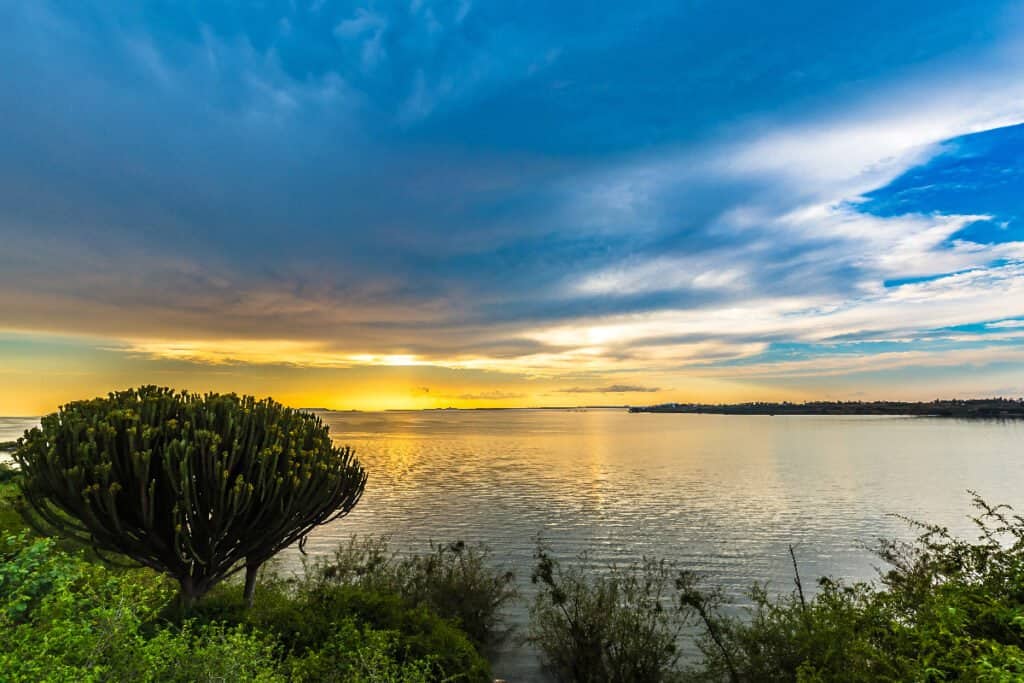
Lake Victoria has an area of 26,828 square miles where over 200 species of fish live.
©Stefan Haider/Shutterstock.com
This lake is the largest in Africa. It can be found in Kenya, Tanzania, and Uganda. Lake Victoria has received the title of the largest tropical lake in the world and the second-largest freshwater lake. It has an area of 26,828 square miles where over 200 species of fish live.
3. Great Slave Lake
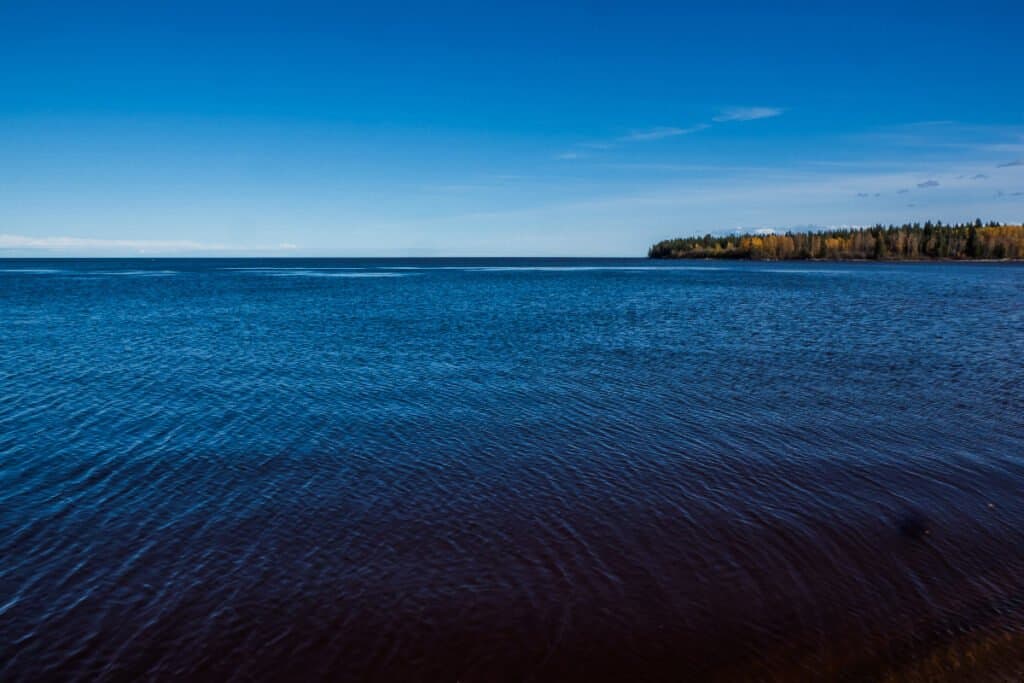
Great Slave Lake is located in Canada’s Northwest Territories.
©norikko/Shutterstock.com
This lake is the deepest in North America. It is one of the most popular spots among fishing and traveling enthusiasts. It is located in Canada’s Northwest Territories. Besides being rich in wildlife and stunning natural views, Great Slave Lake also has a cultural touch. Its name comes from the Slavey people who lived on the coast around 8,000 years ago.
4. Lake Malawi
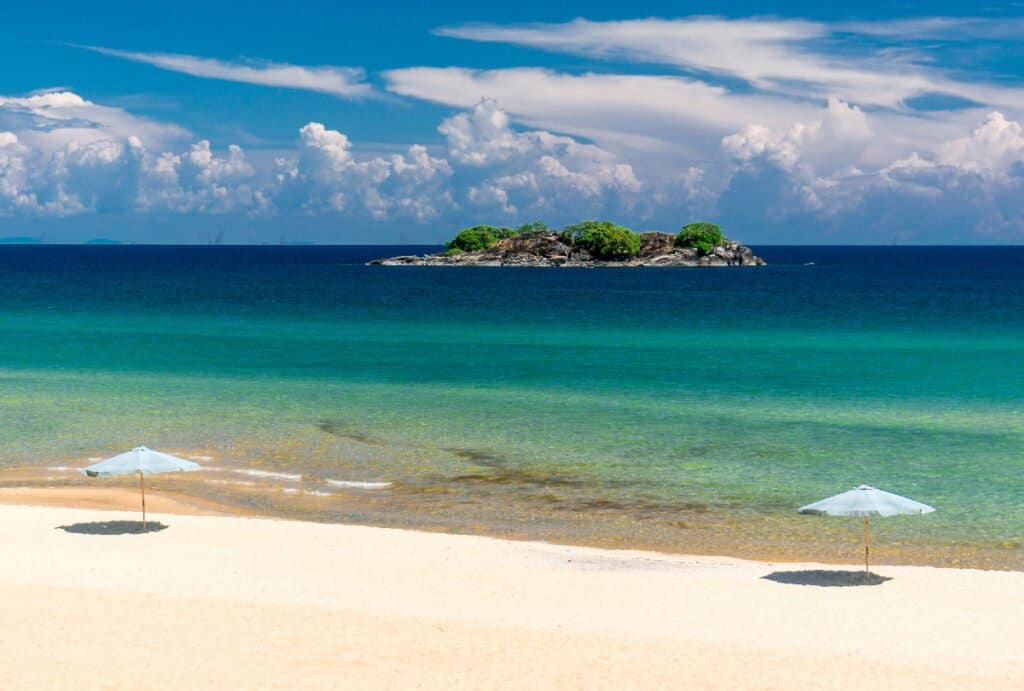
Lake Malawi is famous for its clear water and 20-meter underwater visibility.
©Scott Biales DitchTheMap/Shutterstock.com
This lake is situated in two countries – Mozambique and Tanzania. It’s the 6th-deepest lake in the world, with a depth of 2,316 ft (706 m). Like Lake Baikal, despite its depth, Lake Malawi is famous for its clear water and 20-meter underwater visibility. Over 1,000 species of fish inhabit the lake’s ecosystem.
5. Lake Titicaca
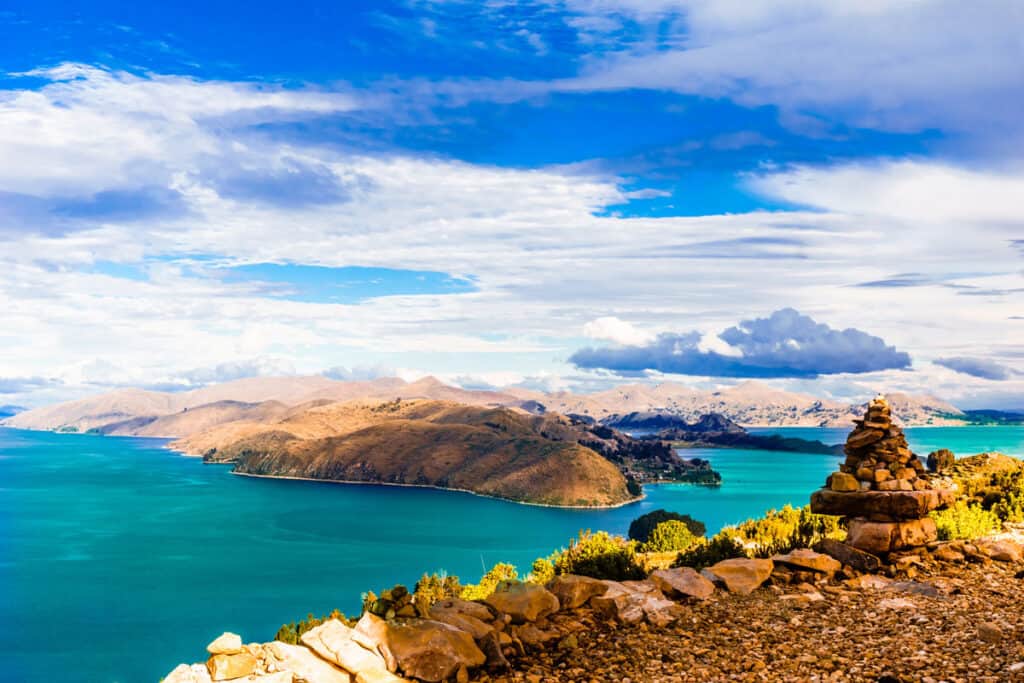
Lake Titicaca is one of the largest lakes in South America, bordering Bolivia and Peru.
©iStock.com/StreetFlash
Travelers visit Lake Titicaca mostly because it’s a historical and cultural treasure, as it is filled with ruins. Lake Titicaca is one of the largest lakes in South America, bordering Bolivia and Peru.
10 Largest Lakes in the World
| Rank | Lake | Area (square miles) | Countries with shoreline |
|---|---|---|---|
| 1 | Superior | 31,700 | Canada, United States |
| 2 | Victoria | 26,590 | Uganda, Kenya, Tanzania |
| 3 | Huron | 23,000 | Canada, United States |
| 4 | Michigan | 22,300 | United States |
| 5 | Tanganyika | 12,600 | Burundi, Tanzania, Zambia, Democratic Republic of Congo |
| 6 | Baikal | 12,200 | Russia |
| 7 | Great Bear Lake | 12,000 | Canada |
| 8 | Malawi | 11,400 | Malawi, Mozambique, Tanzania |
| 9 | Great Slave Lake | 10,000 | Canada |
| 10 | Erie | 9,900 | Canada, United States |
10 Deepest Lakes in the World
| Rank | Lake | Depth (feet) | Countries with shoreline |
|---|---|---|---|
| 1 | Baikal | 5,387 | Russia |
| 2 | Tanganyika | 4,820 | Burundi, Tanzania, Zambia, Democratic Republic of Congo |
| 3 | Vostok | ~3,300 | Antarctica |
| 4 | Malawi | 2,316 | Malawi, Mozambique, Tanzania |
| 5 | Issyk-Kul | 2,192 | Kyrgyzstan |
| 6 | Great Slave Lake | 2,014 | Canada |
| 7 | Van | 1,480 | Turkey |
| 8 | Great Bear Lake | 1,463 | Canada |
| 9 | Superior | 1,333 | Canada, United States |
| 10 | Reindeer Lake | 1,106 | Canada |
Thank you for reading! Have some feedback for us? Contact the AZ Animals editorial team.



